White Mahakala — bringing generosity and good fortune to our lives with Chenrezig’s auspicious form of compassion
Compassion comes in many forms. Sometimes we need a friend. Sometimes we need a protective warrior. Sometimes, a fierce kick in the rear (metaphorically). And sometimes we need to reduce our obstacles to Dharma practice. Chenrezig, the Lord of...
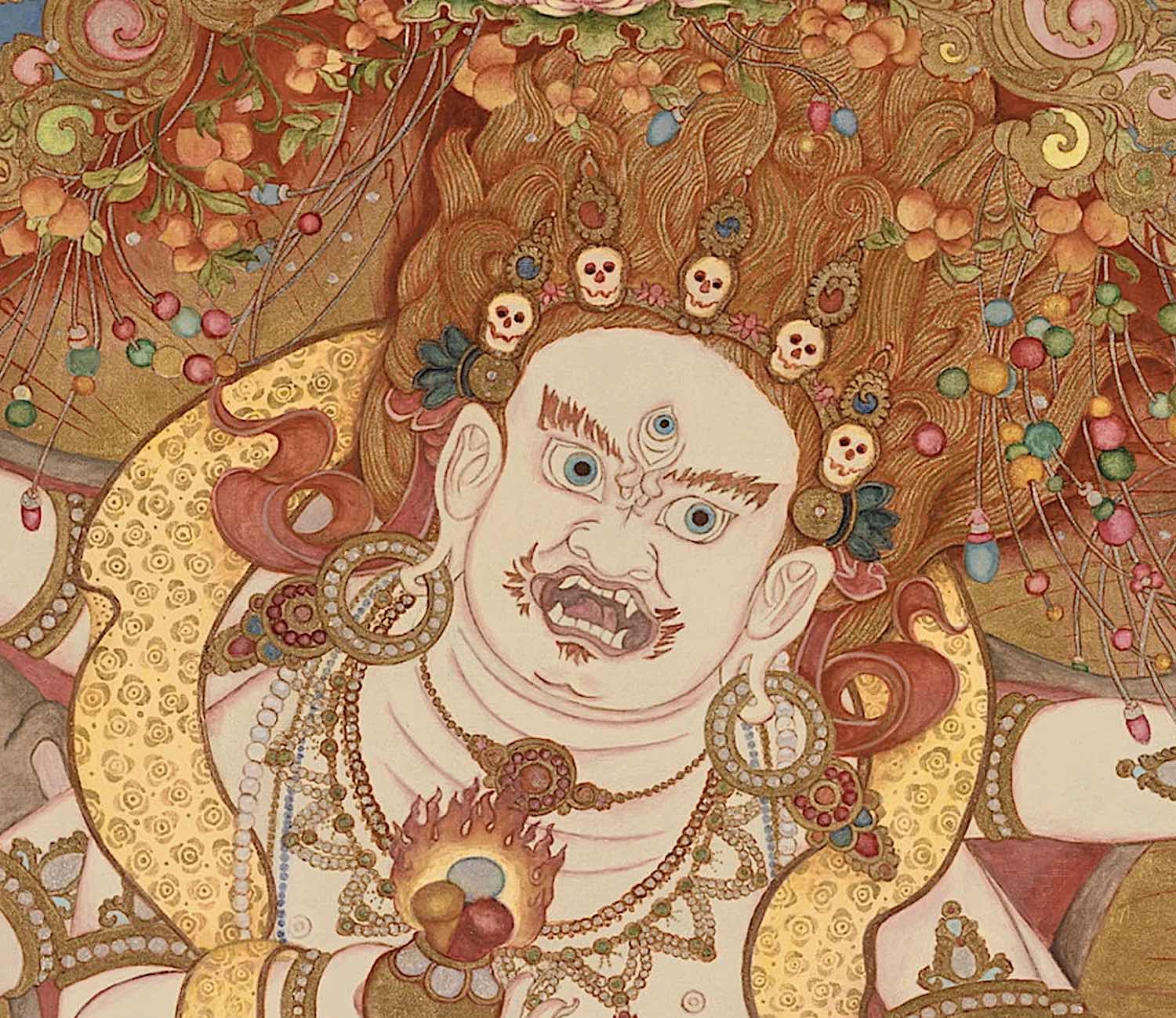
Compassion comes in many forms. Sometimes we need a friend. Sometimes we need a protective warrior. Sometimes, a fierce kick in the rear (metaphorically). And sometimes we need to reduce our obstacles to Dharma practice. Chenrezig, the Lord of Compassion, emanates in countless forms to help all sentient beings, including a “good fortune” aspect — known as White Mahakala.
EVENT NOTICE: On Friday February 25, 2022, Venerable Zasep Rinpoche (see a quote from about White Mahakala Rinpoche below) will offer empowerment in White Mahakala prosperity practice at 6:30pm eastern time, as requested by Venerable Zawa Rinpoche of the Tsongkhapa Meditation Center near Montreal, Canada. [Details below.]
Does it seem counter-intuitive, that Buddhist practices include “good fortune” practices — especially when Buddha taught renunciation? Does it seem selfish to ask for Enlightened help with our obstacles such as poverty, stress, or resources? It shouldn’t. Imagine if fully renounced monks are starving, unable to find a bowl of rice. How can they meditate? How can they practice Bodhichitta when they can’t even find food for themselves? And how can the lay community support the monks when they can’t feed themselves.
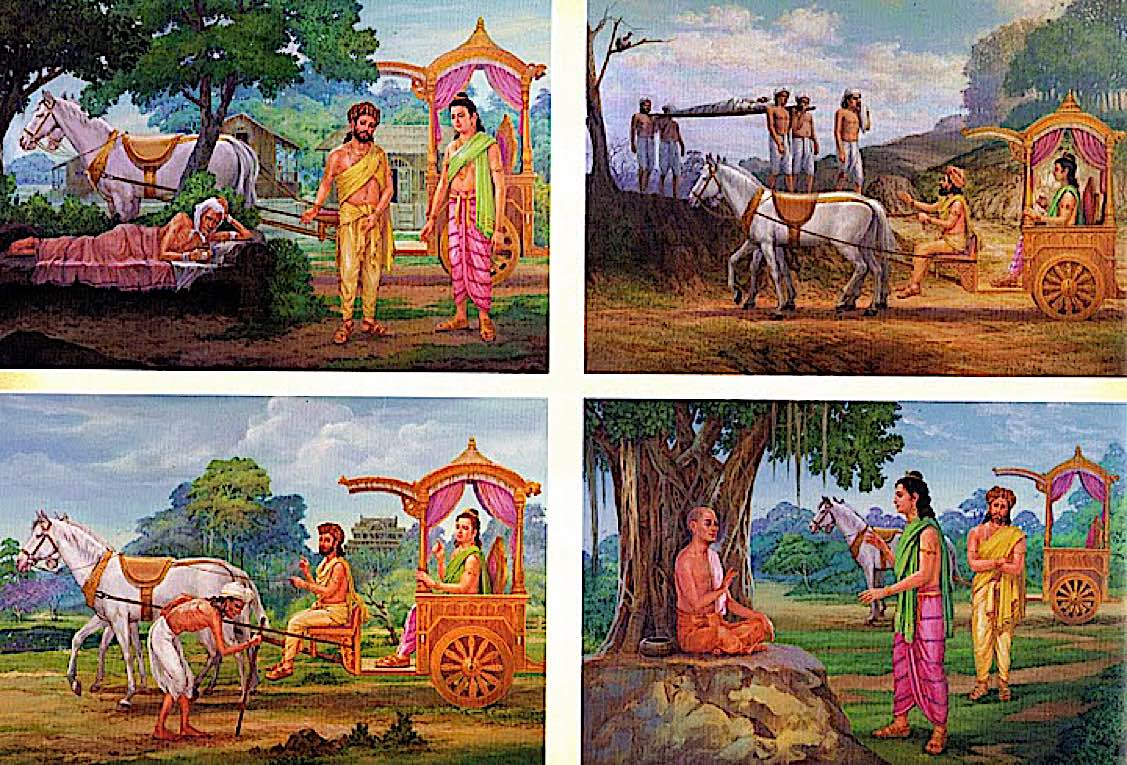
When Prince Sidharta left the palace, against the wishes of his father, he saw the four sights: poverty, illness, old age and death. It is towards the first of these that practices such as White Mahakala are directed. Although students well advanced on their path — and with life circumstances (such as wealth or good means, or a supportive society) — follow the path of renunciation, they are supported by the majority of Buddhists, who are lay practitioners. In addition to “dana” or generosity for people in poverty, the right use of wealth includes removing obstacles for self and others so that one can practice the Dharma.
Wealth is neither virtuous nor nonvirtuous
In Mahayana Buddhism, wealth is not considered either a non-virtue or a virtue. It’s merit entirely depends on why a person accumulates wealth — and how it is used. The goal of the Mahayana vehicle is to help all sentient beings to achieve Enlightenment.

Traditional offering bowls in Thailand temple, where golden coins fill each bowl. Wealth itself is not a negative in Buddhism, but the wealth has to be righteously obtained and righteously used.
As part of that path, generosity, good deeds, charity and helping others is important. Until all beings have attained Enlightenment they suffer — and the one way to help them is to remove their obstacles and negativities, such as poverty, hate, and envy. Having sufficient resources is an aid to Dharma, assuming the goal is virtuous and the actions are positive.
This is why, in the story of Lord Atisha [below] Chenrezig appeared to him and offered to help him as “a Buddha of Wealth” so that he could help people in need.
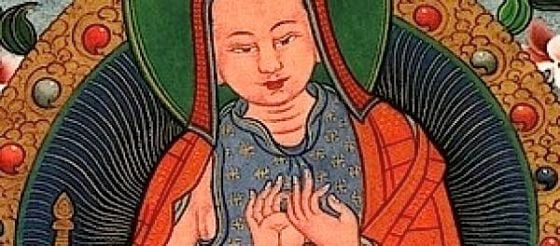
Lord Atisha encountered Chenrezig as the Buddha of Wealth.
Lord Atisha and the Buddha of Wealth
Lord Atisha, the revered lama and Mahasiddha, came across an old man, dying of starvation in Bodhgaya. Lama Atisha offered his own flesh, cut from his body, to save the old man. But the old man said, “How can I eat a monk’s flesh?” Lama Atisha felt helpless in the face of this suffering.
In Lama Atisha’s moment of despair, Chenrezig, the Compassionate One, appeared to Atisha and said, “I will manifest as the Buddha of wealth, to help suffering beings. I shall alleviate their poverty so they will not be distracted from practicing the good heart.”
This famous story illustrates why Chenrezig, the lord of Compassion, manifests in countless forms — including White Mahakala for prosperity — to help us remove our obstacles to practice and Dharma.
Note: This is to illustrate the concept of wealth deities. The emanation in this story was actually Dzambala (Jambala.)
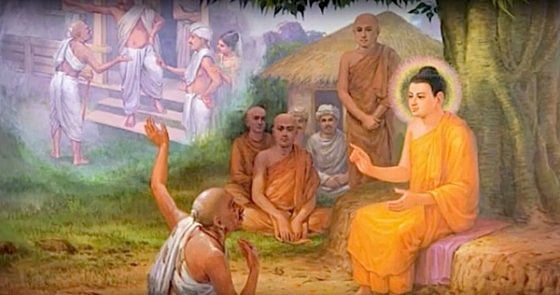
Shakyamuni Buddha teaches Singala the householder, instructing him in Buddhist responsibilities from a Lay person’s point of view. Buddha often taught on practical issues such as “right livelihood” and how to live as a lay person.
Buddha Shakyamuni’s Teachings “Practical”
Buddha’s teachings, demonstrated in thousands of sutras, are above all practical. He not only lofty Enlightened methods of practice, but he also taught “right livelihood.” He demonstrated endless compassion and generosity — even faced with the serial killer, he took the time to bring him into the Dharma, and become one of his monks. One entire sutra is dedicated to the “householder” — even touching on loans and livelihood.
In later Mahayana and Tantra teachings, he gave us methods for meditating on prosperity, attracting “good fortune” methods, to help us on the path.
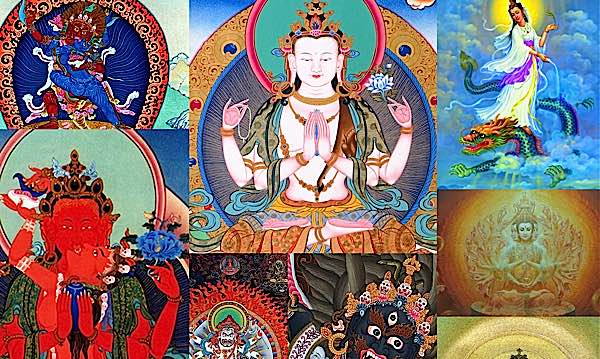
The many faces of Chenrezig Avalokiteshvara, the Buddha of Compassion. White Mahakala bottom center-left.
White Mahakala and Removing Obstacles
For we laypeople, we do have to work and earn salaries and raise families — but the more stress we have in just “making a living” the less likely we’ll find any time for mindfulness practice or any serious practices. Or, for those of us advancing along towards retirement, looking forward to our first multi-week retreat, will we have the resources to undertake our aspiration? Then, there are those generous people who tirelessly help people less fortunate — donating either time or money — they need “resources” to help others.
It is for all of these reasons that Chenrezig — none other than the Bodhisattva of Compassion Avalokiteshvara — emanated as White Mahakala.
Wealth Merit Comes to Those With Right Intentions
Don’t expect White Mahakala to make you a millionaire — or to help you win the lottery. His compassion is for serious Dharma practitioners. It is for the mission of Bodhichitta. In his Sadhana, we begin with Taking Refuge in the Three Jewels” then we immediately — and importantly — recite the Four Immeasurables Four Times:
May all beings have happiness and its causes
May all beings be free from suffering and its causes
May all beings never be separated from joy transcending sorrow
May all beings dwell in equal love for those both near and far.
His practice helps us to help ourselves. His practice ensures we work harder. His practice is about setting the intention for prosperity — sufficient resources to allow us to practice both Bodhichitta and Wisdom practices both.
After the Four Immeasurables, we visualize ourselves as our own Yidam, then White Mahakala in front of us in detail. We make offerings — the best of which are to first demonstrate your generosity to others by giving to charity or other good causes — and visualize blessings going out to all sentient beings in the entire universe while reciting the mantras (below.)
For a feature on the “many faces of Chenrezig Avalokiteshvara, see>>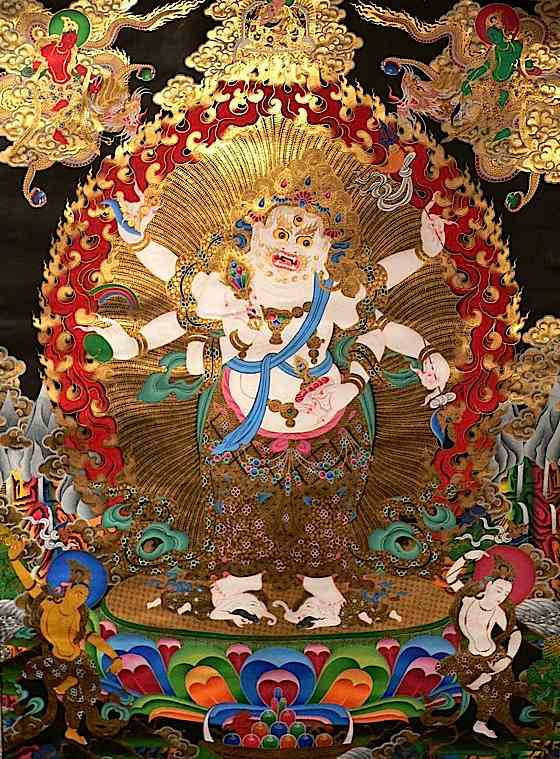
White Mahakala is a manifestation of the Compassionate One, Chenrezig, or Avalokiteshvara. White Mahakala helps provide what is needed for the practice of the Dharma by removing the obstacles of poverty.
Who is White Mahakala?
Venerable Zasep Rinpoche explains White Mahakala this way in his book Source of All Protectors.[1
“White Mahakala is a Protector and prosperity mainly practiced in the Gelug and Sakya traditions of Tibetan Buddhism. Through the practice of White Mahakala we can create prosperity for self, family and community…
In order to practice White Mahakala Pujas it is ideal to receive empowerment from the Guru. If you don’t have this empowerment it is fine, you can still do the practice. All you need is faith and devotion to White Mahakala and his attendant deities. This should be a daily practice for those needing relief from poverty.”
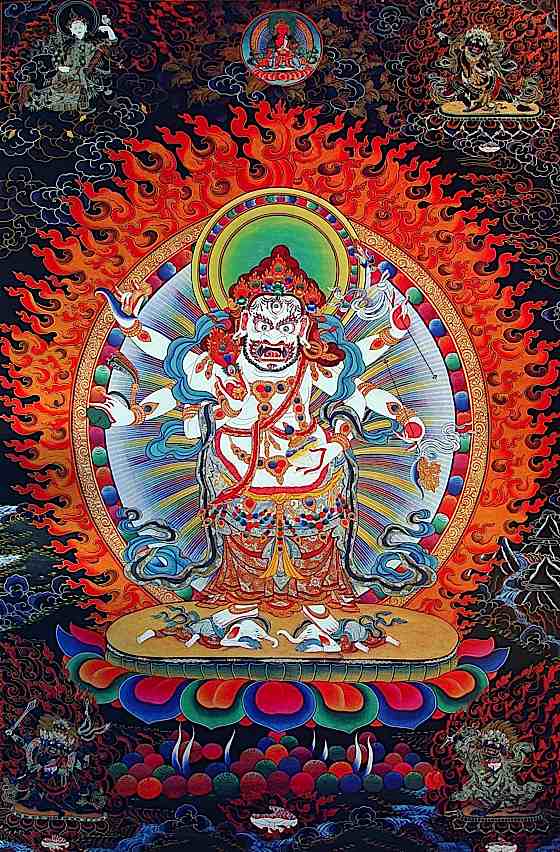
The “form body” or Rupakaya of the fierce deity White Mahakala represents the nature of his compassionate action. Each of his six hands hold symbolic implements, such as a skullcap of jewels, and he tramples on two elephants, symbolic of overcoming simple material prosperity, and other concepts.
Describing White Mahakala
The noted art scholars at Himalayan Art described White Mahakala this way:
“Shadbhuja Sita Mahakala, (Tibetan: gon po kar po chag drug pa. English: the White Lord with Six Hands). Emanation of Avalokiteshvara and principal wealth deity of the Shangpa Kagyu School of Tibetan Buddhism.
White in colour with on face, he has three glaring eyes, a gaping mouth with bared fangs, orange hair flaming upward and six hands. In the three right hands are a curved knife, wish-fulfilling jewel and a damaru (drum). In the left hands are a skullcup containing a vase filled with various jewels, a trident and a vajra hook. Adorned with a crown of jewels and gold, precious ornaments and green silk he stands with the two legs straight atop two elephant-headed figures, spewing jewels, above a sun disc and lotus seat surrounded by the red and gold flames of pristine awareness….”
White Mahakala Mantra
As Venerable Zasep Rinpoche indicated in his book, we may practice White Mahakala with virtuous intention, including his mantra. If we do not have empowerment, we should always only visualize White Mahakala in front of us. His mantra, of course, has far more impact on our mindstreams and karma if we have a teacher’s permission, but the mantra is well distributed — so we do reproduce it here:
OM GURU MAHAKALA HARI NI SA SIDDHI DZA
(Tsa or Dza on last syllable)
NOTE: It is best, however, when practicing White Mahakala, even though it is Chenrezig, to first self-generate as your own YIDAM if you do not have empowerment for this practice. From a Vajrayana point-of-view this is always advised.
White Mahakala Prosperity Vase
Another tradition is to take home a White Mahakala Prosperity Vase and honor it on your altar. The vase should be filled and blessed by qualified teacher, however, and it should be occasionally re-blessed.
Venerable Zasep Rinpoche describes the practice in his book:
“Sometimes we practice White Mahakala with a prosperity vase ceremony. The vase will be filled up with images of the deity, mantras, vase substances (Bom Zay), prosperity herbal pills and precious and semi-precious stones, silk, wool, and so on. After that, the vase is to be consecrated according to the traditional Sadhana and mantras, a number of times. Then, the faithful can take the vase from the Lama; when taken home, it can be placed on the altar, in a box, as a treasure vase and object of offerings. It is an object for prayers for prosperity and can be brought back every summer for re-consecration. This tradition is still practiced strongly in Mongolia.”
EVENT: Mahakala Empowerment
Empowerment of White Mahakala by Venerable Kyabje Zasep Tulku Rinpoche
Date: February 25th, 2022 (Friday) Time: 6:30pm (Montreal time) Venue: Zoom Languages: English and Tibetan Suggested donation: $30-$60 CDN for each personCommitments (for those who take empowerment):
You should keep the teachings of Lamrim as your core practice. You will need to take Refuge Vows and Bodhisattva Vows before the empowerment, which Zasep Rinpoche will confer on the same day. Upon and after taking vows and empowerment from Zasep Rinpoche, you should regard Zasep Rinpoche as one of your Gurus.For inquiries and registration, please go to and email the Tsongkhapa Meditation Center at>>
(Registration closes on February 23rd)
Note: Along with the empowerment, commentary on White Mahakala daily practice(sadhana) will also be given by Zasep Rinpoche. Sadhana text will be sent to you right after you complete the registration process.
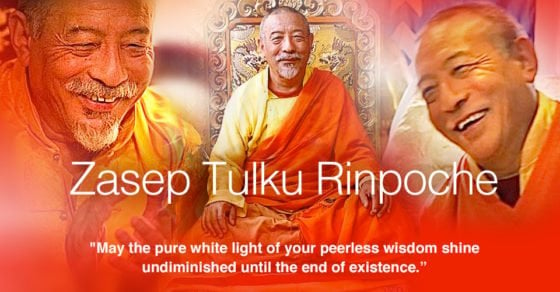
H.E. Zasep Tulku Rinpoche with a line from his “long life prayer” which was composed by his teacher HH Kyabje Trijang Rinpoche.
About Venerable Kyabje Zasep Tulku Rinpoche
To read our interview with Venerable Zasep Rinpoche on Buddha Weekly, part 1, see>> https://buddhaweekly.com/zasep-tulku-rinpoche-interview-part-1/
Zasep Tulku is the spiritual head of a number of Buddhist Centers, including Gaden Tashi Choling Retreat Centre in Nelson, BC, Canada, Vancouver, BC, Calgary, Alberta, Toronto, ON, Ottawa, ON, Thunder Bay, ON, Seattle, WA, Moscow, ID, Kalamazoo, MI, and Tasmania, Australia.
The Venerable Acharya Zasep Tulku Rinpoche, a highly realized and internationallyrespected teacher of Gelugpa Buddhism, was born in Tibet in the province of Kham in 1948. Zasep Tulku Rinpoche was recognized as the 13th incarnation of Lama Konchog Tenzin of Zuru Monastery. In 1959, during the Chinese invasion, he escaped from Tibet and continued his education for sixteen years in India under the tutelage of many of the greatest teachers of Mahayana Buddhism. In 1975, Zasep Rinpoche left India to study in Thailand where he joined the monks of a forest monastery. For eighteen months he studied and practiced with them. He then traveled to Australia and translated for Tibetan speaking Lamas for a number of years.
Since 1976 he has taught western Dharma students in Australia, Canada, and the United States and has developed Dharma centres in each of these countries. Rinpoche regularly visits these centres and offers extensive teachings, initiations and retreats which his many students enthusiastically attend. Zasep Rinpoche now resides in Nelson, BC, close to the Gaden for the West retreat centre (Gaden Tashi Choling Retreat).
In 1999, Rinpoche and his students created the Gaden for the West umbrella organization to more effectively support and nourish the study of Gelugpa Tibetan Buddhism in the West. He supports a number of Buddhist projects in Tibet, Mongolia and India through the non-profit society Gaden Relief.
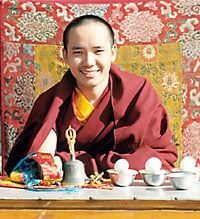
Venerable Zawa Tulku Rinpoche of Tsongkhapa Meditation Center.
Ven. Zawa Tulku Rinpoche
Ven. Zawa Tulku Lobsang Dorje Chokye Gyaltsen Rinpoche is the Spiritual Director of the Tsongkhapa Meditation Center. He was born in India, in 1978. Recognized as the reincarnation of Zawa Geshe Rinpoche, he became an ordained monk at Ganden Shartse monastery in 1982. There, he studied Buddhist philosophy until 1998. He then embarked upon an international tour, teaching at numerous Dharma centers. In addition to his dedication to teaching Buddhism, he is also a master of the construction of sand mandalas and ritual arts. His specialities include healing and purification rituals. He is renowned for his kindness and pure morality.
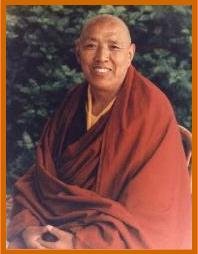
Ven. Geshe Khenrab Gajam, founder of Tsongkhapa Meditation Center
About Tsongkhapa Meditation Center
Founded in 1980 by Ven. Geshe Khenrab Gajam, the Tibetan Buddhist Temple Gaden Chang Chub Chöling was officially inaugurated in May 1986 in Montreal, Quebec, Canada. Ven. Geshe Khenrab deepest wish was to create a center where the compassionate Mahayana Buddhist tradition, instituted by the great Dje Tsongkhapa, could flourish. To this end, Ven. Geshe Tsultrim Tenzin and two of his disciples, Ven. Zawa Tulku Rinpoche and Gen. Lobsang Tashi came to Montreal to establish a permanent monastic Sangha presence at Gaden Chang Chub Chöling. In 2014, the Center was moved in Ste Sophie, north of Montreal, under the name of Tsongkhapa Meditation Center. Through their kindness, we now have the opportunity to study and practice the Dharma and the meditation methods taught by Buddha to develop inner peace and lead a meaningful life.
Ven. Geshe Khenrab Gajam is the founder of Tibetan Buddhist Temple. Born in 1928 in the province of Kham in eastern Tibet, he became a novice monk at a very young age in the monastery of Tashi Choling Nyagon where he stayed for 4 years. Then, according to the Gelugpa monastic tradition, he went to perfect his Buddhist education in the great monastic university of Ganden. At the age of 24, Geshe Khenrab demonstrated his mastery of the various topics and began to teach. In 1959, Geshe Khenrab and many other Tibetans migrated to India. At the age of 40, he obtained the title of Geshe Lharampa, the highest degree in the Tibetan monastic system, thus completing the cycle of Buddhist philosophical studies. He reached a high level of knowledge, second in his class after the famous Pabongka Rinpoche. In 1993, Geshe Khenrab showed the signs of impermanence.
NOTES
[1] Source of All Protectors, is only available from Gaden for the West website since it includes several higher practices requiring empowerment. Inquire with their contact form>>

 Troov
Troov 
































